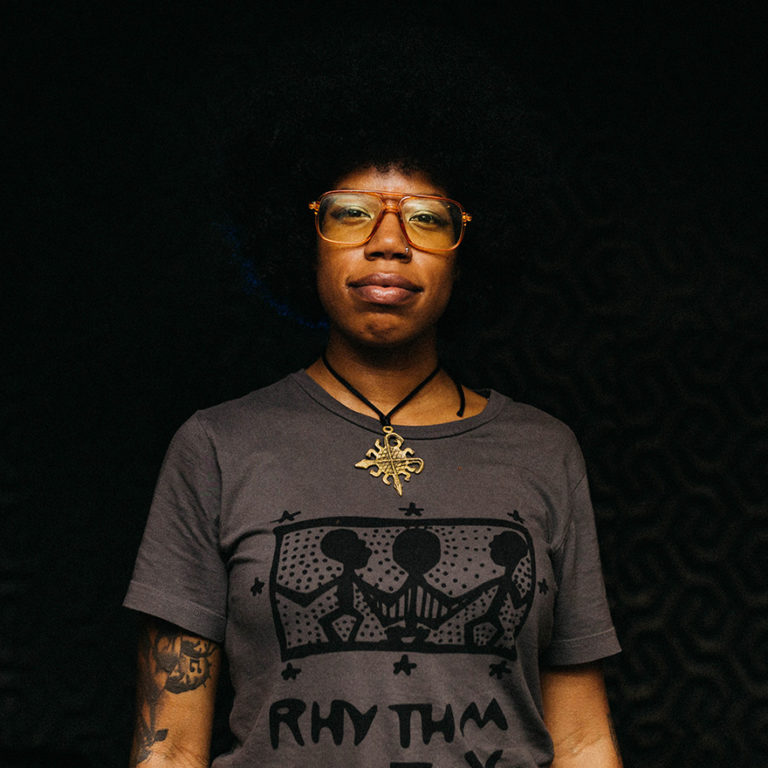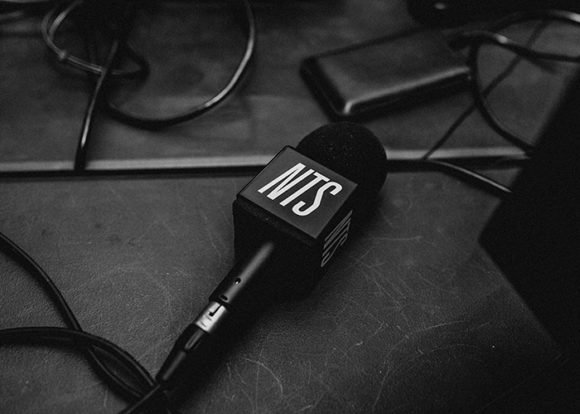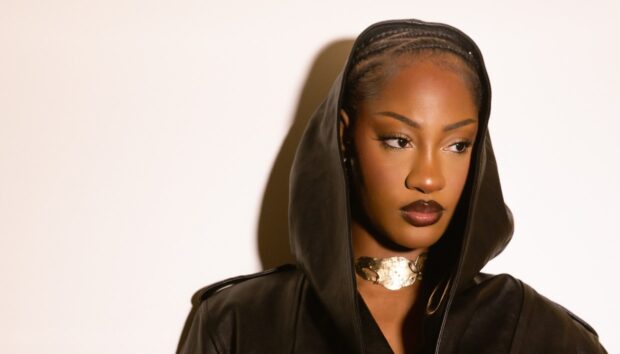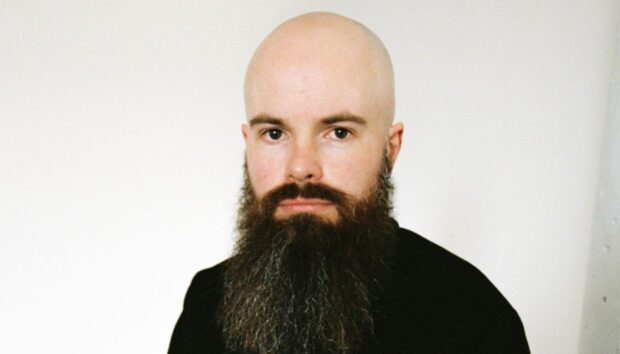Georgia Anne Muldrow radiates wisdom beyond her years. A prolific singer, songwriter and producer, her work includes collaborations with the likes of Mos Def (who has compared her to Ella Fitzgerald and Nina Simone), Erykah Badu, Madlib, and Robert Glasper among many others. With her life partner and most frequent collaborator, Dudley Perkins a.k.a. Declaime, she founded her own label, SomeOthaShip Connect, in 2008, through which she’s released projects under a variety of monikers, including G&D (her duo with Perkins) and Jyoti, a Hindu name given to her by the late cosmic jazz visionary Alice Coltrane.
Her latest album, Overload, is her first for Brainfeeder, the label founded by Coltrane’s grand nephew, Flying Lotus. Though still steeped in the old-school soul, funk and jazz influences that inform all her work, Overload features Muldrow at her most melodic and accessible, thanks in no small part to collaborations with hip-hop producers Mike & Keys (Nipsey Hussle, Snoop Dogg), Khalil (Dr. Dre, Anderson .Paak), Dutchman Moods, and Lustbass. The album was executive produced by Flying Lotus, Aloe Blacc and Perkins, who describes it as “an album for grownups.” For Georgia, he says, “This is less experimental. This is more like, ‘I know what I’m doing, I got it.’”
Ahead of the release of Overload and her Sounds.com pack, Muldrow and Perkins met up with us in Los Angeles’ Chinatown neighbourhood for a little cold sake and a wide-ranging conversation about the challenges of making pop music and the joys of sculpting sound.
Check out Ms One’s Someofthabreaks by Georgia Anne Muldrow on Sounds.com now.
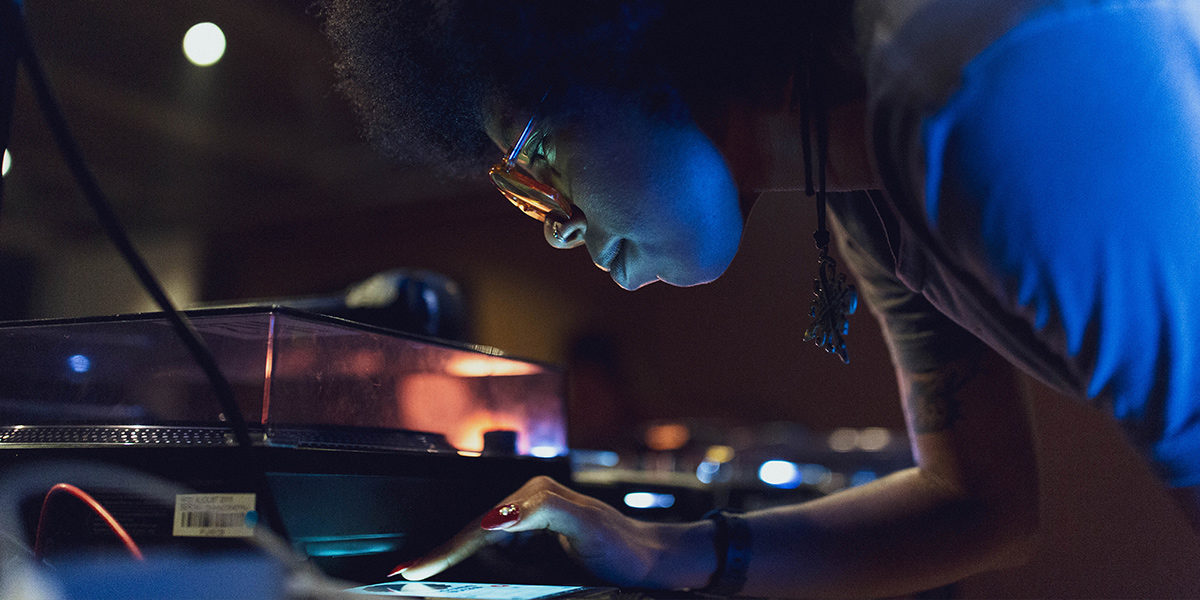
Can you talk about the genesis of this new album, Overload?
A lot of it came from working with other people all over the world. I’m always writing songs all the time. For the “Overload” song, for instance, collaborating with Mike & Keys. I was doing production collaboration with them. I was giving them sound packs in the form of sessions.
Oh, OK, so not necessarily for your own projects.
Yeah, giving them inspiration, you know? Something for them to bounce off of. So in return, they would send me a song and say, “What do you think we can do with this?” So “Overload” was that kind of song.
When you say “sessions,” you’re talking about working alone in your home studio, jamming and improvising?
Yeah, man. What I do is jam. [laughs] I live to jam. Our discipline is the jam. I treated [this album] like an experiment. Like, “What can I do on a song like this?” Because pop music is so easy to do for me. It doesn’t give me enough of a challenge.
So was there a point when you were working on “Overload” where it went from, “This is just something I’m working on with these guys” to, “Wait, I think I want this to be my song”?
I think it was when I finished it and when Dudley heard what I was working on, and my teenage daughter was like, “Now you get it. You makin’ sense now.”’ Because before, she’d be like, “My momma’s so weird.” But when she heard that, she was like, “That’s what I’m talkin’ about. I knew you could do it.”
In all of the stuff that I’m doing, I think melody is really important. I’ve been raised to really value melody from both my parents. The melody is what people sing with, it’s what they take away from the song. So I try to, even if my chords are going crazy, have a melody that ties it all together.
Because I am a scientist, all of it is an experiment. But what I learned from Dudley is, I can still be experimental and make music like this. It’s an experiment in restraint — and then the live show is an experiment in improvisation. The songs explode onstage.
I’ve seen videos of you in your home studio setup, and I think it’s really cool that even though you’re working so much with electronic and virtual instruments, your music is so rooted in old-school soul and jazz. It sounds really organic.
I want it to sound real. I really hear people jamming in my head [laughs]. So I just try to echo what I’m hearing. It’s a way of paying homage to the things I love.
You know, when people say, ‘Oh you gotta have analogue equipment or it ain’t gonna sound [right].’ I just really don’t believe that. I believe it’s what you hear. I believe you can use your mobile phone to make whatever it is you want, if you know how to follow the signal here. [points to her temple] If you can hear it and imagine that signal, you ain’t gonna be limited by whatever you’re working on. But it takes a love of listening to sound itself. You have to have a love for that to develop that kind of ability.
I love Maschine because my first piece of serious gear was an MPC. And I used it as a MIDI production center. I wasn’t coming so much from the chopper area, even though I did have fun fiddling with that. But I love the MIDI sequencing. You’re able to do a lot of things; you’re able to play with an idea, and those ideas loop around and turn into something special. So I always loved the sequencing aspect.

Is part of the appeal of MASCHINE that you can play it like an instrument, as well? Do you find new combinations of sounds or happy accidents by just jamming on it?
The happy accidents happen a lot more with the MIDI cables. They do a certain thing when they heat up and it starts jumping across the pins. There are certain things that will happen, real Funkadelic moments. The hi-hat will start reversing on its own. Some crazy stuff.
Which tracks on the album did you produce yourself?
There’s a few of them. I did the “Canadian Hillbilly” one.
That’s one of my favourite songs on the album. There’s a wash effect running through the background of that track I wanted to ask you about — it almost sounds like it’s horns?
It’s a lot of things. I use modeling synths on top of one another. You got a bowed exciter there with your impulse reverb. And just really tweaking it — tweaking the reverb. I use Prism. I like to stack stuff.
Yeah, you can hear some interesting harmonics going on in just that one sound.
Yeah, and automated all the way through. One thing I want to tell people is, never be afraid to be hands-on until you get the sound you want to hear. Because sometimes, there’s so much peer pressure out here. There’s a “keep up with the Joneses” thing going on with quote-unquote “urban” music where you gotta hit a preset first. And I think you miss out on so much of what that [virtual] instrument is capable of. You gotta dig in there, man, and sculpt your own sound. For me, going in there and deep editing and all that — that inspires me musically.
Being able to make music on my own, on a computer, was a very good thing for me. ‘Cause I was starting out young and it gave me a voice in production. Because when I was working with live musicians — no disrespect to those people, ‘cause they’re great people — but I had an aesthetic in my mind … I had a sense of timing that was only in here. [points to head] There wasn’t really no reference that I could share with them. I had to play different records that had nothing to do with what this [points to head again] sounded like. “OK, can you check out Sun Ra for me?” And even then, they’d be like, “No, that’s not how you would have it sound.” So the opinions of the musicians I was working with got in the way of me producing the session and the music I wrote.
I feel like technology’s greatest power is its ability to listen to input. It’s electricity — [and] we’re bioelectric people, you know what I’m saying? Ain’t nothing outside of the creator. It’s just gonna manifest in all types of different [ways], according to what’s in our minds and what’s in our willpower.
But really technology listens, just like a baby listens, to its environment. You kick a baby upside its head instead of hug it, it’s gonna be a monster. It’s gonna turn into someone who kicks somebody in their head. Same thing with technology. So I think with technology, if you regard it like that and you take good care of it, and you do good things with your time and your intent, the sky’s the limit.
Check out Ms One’s Someofthabreaks by Georgia Anne Muldrow on Sounds.com now.








